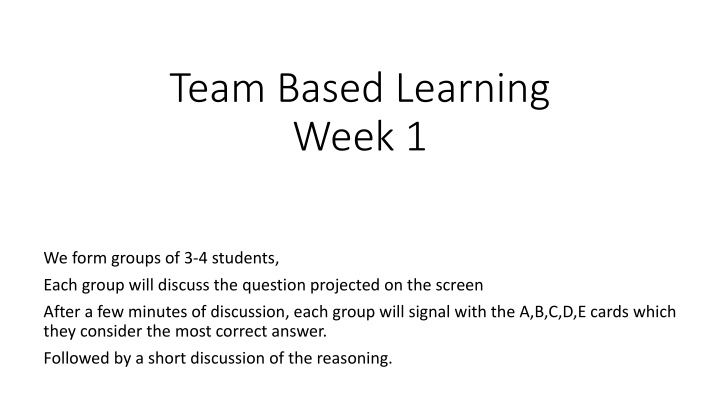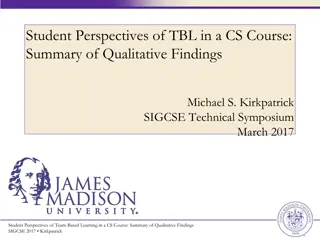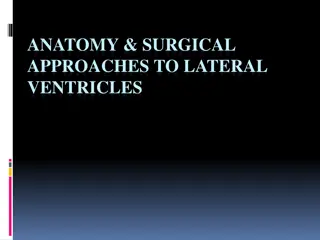
Protein Sequence Combinatorics and Sequence Space Analysis
Explore the vast possibilities of protein sequences through combinatorics and sequence space analysis. Understand the theoretical limits of amino acid substitutions in a multi-dimensional sequence space scenario. Delve into the complexities of protein sequence variation and potential evolutionary paths within the sequence space landscape.
Download Presentation

Please find below an Image/Link to download the presentation.
The content on the website is provided AS IS for your information and personal use only. It may not be sold, licensed, or shared on other websites without obtaining consent from the author. If you encounter any issues during the download, it is possible that the publisher has removed the file from their server.
You are allowed to download the files provided on this website for personal or commercial use, subject to the condition that they are used lawfully. All files are the property of their respective owners.
The content on the website is provided AS IS for your information and personal use only. It may not be sold, licensed, or shared on other websites without obtaining consent from the author.
E N D
Presentation Transcript
Team Based Learning Week 1 We form groups of 3-4 students, Each group will discuss the question projected on the screen After a few minutes of discussion, each group will signal with the A,B,C,D,E cards which they consider the most correct answer. Followed by a short discussion of the reasoning.
Sequence Space Figure from Eigen et al. 1988 illustrating the construction of a high dimensional sequence space. Each additional sequence position adds another dimension, doubling the diagram for the shorter sequence. Shown is the progression from a single sequence position (line) to a tetramer (hypercube). A four (or twenty) letter code can be accommodated either through allowing four (or twenty) values for each dimension (Rechenberg 1973; Casari et al. 1995), or through additional dimensions (Eigen and Winkler-Oswatitsch 1992). Eigen, M. and R. Winkler-Oswatitsch (1992). Steps Towards Life: A Perspective on Evolution. Oxford; New York, Oxford University Press. Eigen, M., R. Winkler-Oswatitsch and A. Dress (1988). "Statistical geometry in sequence space: a method of quantitative comparative sequence analysis." Proc Natl Acad Sci U S A85(16): 5913-7 Casari, G., C. Sander and A. Valencia (1995). "A method to predict functional residues in proteins." Nat Struct Biol2(2): 171-8 Rechenberg, I. (1973). Evolutionsstrategie; Optimierung technischer Systeme nach Prinzipien der biologischen Evolution. Stuttgart-Bad Cannstatt, Frommann-Holzboog.
How many different protein sequences are possible based on simple combinatorics? Assume that a sequence is 50 amino acids long and that for each position all 20 aa are possible (obviously unrealistic, one hardly would have a protein with 20 tryptophanes in a row). How many different sequences are possible? A. 4150 different sequences are possible (each aa is encode by a triplet of nucleotides) = 2.0 1090 B. 1504 = 506,250,000 C. 2050 different sequences are possible = 1.13 1065 D. 5020=9.5 1033
If one defines sequence space as a multi-dimensional space, where each position in a sequence corresponds to one dimension; and assuming a sequence length of 100 amino acid positions, how many amino acid substitutions are maximally necessary to get from any one point in this sequences space to any other point? The sequence space in this case has 20100 pointsand the maximum distance would the connection that goes through each of these points. A. B. The maximum would be one substitution per site; i.e., 100 in total, to get from any point in sequence space to any other point. C. The maximum number step cannot be calculated in this case. The combinatoric sequence space contains about 1045 more particles that there are elementary particles in the universe. The calculation of the maximal number of steps involves the factorial of this number, which is beyond what can be done in a computer.
The bird wing and the wing of a bat A. are paralogous structures that evolved through duplication of body segments B. are homologous C. are an example of convergent evolution and therefore not homologs.
Sequence similarity versus homology Two sequences in a multiple sequence alignment align nicely over their whole length and they are 55% identical, and 68% similar* A. This level of similarity is sufficient to claim that the complete sequences are homologous over their entire length. B. This means that the sequences are 55% homologous C. This means that the sequences are 68% homologous D. This level of similarity is frequently observed as the result of convergent evolution * 68 % of the sites are either identical or represent a conservative substitution, i.e. replacement of an aa with a functionally similar amino acid
How many different protein sequences are possible base on simple combinatorics? Assume that a sequence is 50 amino acids long and that for each position all 20 aa are possible (obviously unrealistic, one hardly would have a protein with 20 tryptophanes in a row). How many different sequences are possible? A. 4150 different sequences are possible (each aa is encode by a triplet of nucleotides) = 2.0 1090 This is the number of possible nucleotide sequences, but the genetic code is redundant, different triplets of nucs encode the same aa. B. 1504 = 506,250,000 This uses the wrong formula possibilities pos 1 possibilities pos 2 ... C. 2050 different sequences are possible = 1.13 1065 D. 5020=9.5 1033 This uses the wrong formula
If one defines sequence space as a multi-dimensional space, where each position in a sequence corresponds to one dimension; and assuming that one has a sequence length of 100 amino acid positions, how many amino acid substitutions are maximally necessary to get from any one point in this sequences space to any other point? The sequence space in this case has 20100 pointsand the maximum distance would the connection that goes through each of these points. A. B. The maximum would be one substitution per site; i.e., 100 in total, to get from any point in sequence space to any other point. C. The maximum number step cannot be calculated in this case. The combinatoric sequence space contains about 1045 more particles that there are elementary particles in the universe. The calculation of the maximal number of steps involves the factorial of this number, which is beyond what can be done in a computer.
The bird wing and the wing of a bat A. are paralogous structures that evolved through duplication of body segments B. are homologous C. are an example of convergent evolution and therefore not homologs.
Sequence similarity versus homology Two sequences in a multiple sequence alignment align nicely over their whole length and they are 55% identical, and 68% similar* A. This level of similarity is sufficient to claim that the complete sequences are homologous over their entire length. B. This means that the sequences are 55% homologous C. This means that the sequences are 68% homologous D. This level of similarity is frequently observed as the result of convergent evolution * 68 % of the sites are either identical or represent a conservative substitution, i.e. replacement of an aa with a functionally similar amino acid











